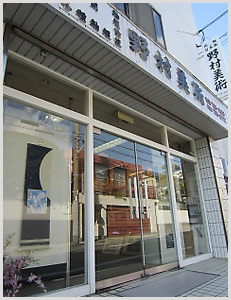kakejiku-art-blog
- Jan 05, 2026 - Restoration of a Severely Damaged Shrimp Kakejiku from Australia
- Dec 29, 2025 - Mounting a Scroll for the Nationwide Ichinomiya Pilgrimage (Shokoku Ichinomiya Meguri)
- Dec 22, 2025 - Mounting a Scroll of the Pilgrimage: The Largest Class of Nōkyō Scrolls — The Hyakukannon Sacred Sites
- Dec 15, 2025 - Heartwarming Feedback from Our Overseas Customer
- Dec 08, 2025 - A Tough Battle with Hanging Scroll Restoration! A Request from the United States
- Dec 01, 2025 - Mounting a Shikoku 88 Pilgrimage Scroll from Australia
- Nov 17, 2025 - From Minnesota to Japan — A Memorable Encounter with a Cherry Blossom Scroll
- Nov 24, 2025 - 【Return Visit】From Abu Dhabi to Japan Again – Finding a Hanging Scroll that Captures the Autumn Spirit of Kiyomizu-dera
- Nov 10, 2025 - A Japanese Hanging Scroll as a Gift for His Girlfriend
- Nov 03, 2025 - The Paint Won’t Set!? A Scroll Mounting Request from the United States
- Oct 27, 2025 - Danger!! That Way of Hanging Could Make Your Scroll Fall!!
- Oct 13, 2025 - Request for Production of a Small-Sized Nichiren Mandala Hanging Scroll
- Oct 06, 2025 - Challenging New Nichiren Mandala Hanging Scroll Commission
- Sep 29, 2025 - Request for Production of a New Type of Nichiren Mandala Hanging Scroll
- Sep 22, 2025 - Lotus-Patterned Brocade for Nichiren Mandala Production
- Sep 15, 2025 - New-Style Nichiren Mandala Hanging Scroll Production
- Sep 08, 2025 - Nichiren Mandala Scrolls to Italy – Making Requests Continue
- Sep 01, 2025 - Another Commission of a Nichiren Mandala from South Africa
- Dec 31, 2025 - Shikoku Pilgrimage Temple: No. 20 Kakurin-ji
- Dec 22, 2025 - Shikoku Pilgrimage Temple: No. 19 Tatsue-ji
- Dec 16, 2025 - Shikoku Pilgrimage Temple: No. 18 Onzan-ji
- Dec 08, 2025 - Shikoku Pilgrimage Temple: No. 17 Ido-ji
- Dec 06, 2025 - Shikoku Pilgrimage Temple: No. 16 Kannon-ji
- Dec 06, 2025 - Shikoku Pilgrimage Temple: No. 15 Kokubunji
- Dec 06, 2025 - Shikoku Pilgrimage Temple: No. 14 Jōrakuji
- Nov 14, 2025 - Shikoku Pilgrimage Temple: No. 13 Dainichi-ji
- Nov 13, 2025 - Shikoku Pilgrimage Temple: No. 12 Shōsan-ji
- Oct 29, 2025 - Shikoku Pilgrimage Temple: No. 11 Fujiidera
- Oct 23, 2025 - Shikoku Pilgrimage Temple: No. 10 Kirihata-ji
- Oct 21, 2025 - Shikoku Pilgrimage Temple: No. 9 Hōrin-ji
Contact Us
Please fill out the form below and submit for your inquiry.
Your privacy is important to us. We are committed to protecting your privacy.
(or press ESC or click the overlay)
CEO Message
(or press ESC or click the overlay)Our Feelings For Kakejiku
Company Profile

Name Art Nomura
President Tatsuji Nomura
Founded1973
Established1992
Address7-23 Babadori, Tarumi-ku, Kobe city,
Hyougo Prefecture, 655-0021, Japan
Capital10 million yen
URLhttp://nomurakakejiku.com
Our Business
Art Nomura is an art dealer which produces kakejiku (hanging scrolls). We mount many paintings and calligraphic works in kakejiku in my factory. Kakejiku are our main product. We also remount and repair old or damaged kakejiku. We share the traditional Japanese art of kakejiku with people all over the world.
(or press ESC or click the overlay)
Access Map
(or press ESC or click the overlay)Access Map
